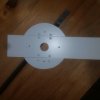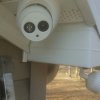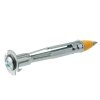Has anyone done this? I mounted my first Security Camera on my front door on the soffit and used some 2x4 between the joists to screw to (got at least 1 screw in so it's pretty secure).
But i've also seen video's where people just mount them to the vinyl/aluminum soffit (Just screwing them in) and that's it? I mean I guess the camera's aren't very heavy so I see no reason why they would fall.
I would place a piece of aluminum on the back porch camera but it's actually under a deck roof so it's not exactly a soffit but more like a vinyl roof panel.
Can I just screw it in and that's it? I don't see why it would fall? Maybe I can just some toggle bolts?
Thanks!
But i've also seen video's where people just mount them to the vinyl/aluminum soffit (Just screwing them in) and that's it? I mean I guess the camera's aren't very heavy so I see no reason why they would fall.
I would place a piece of aluminum on the back porch camera but it's actually under a deck roof so it's not exactly a soffit but more like a vinyl roof panel.
Can I just screw it in and that's it? I don't see why it would fall? Maybe I can just some toggle bolts?
Thanks!






